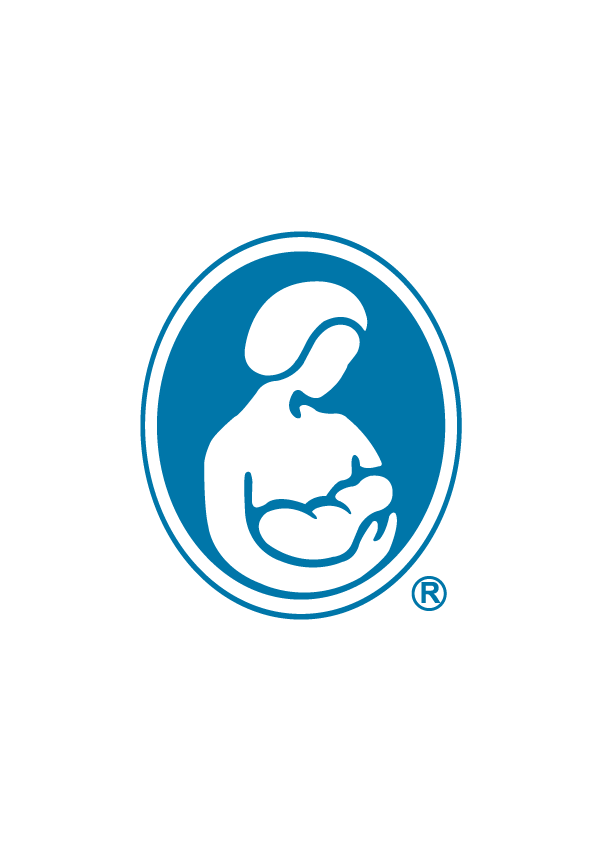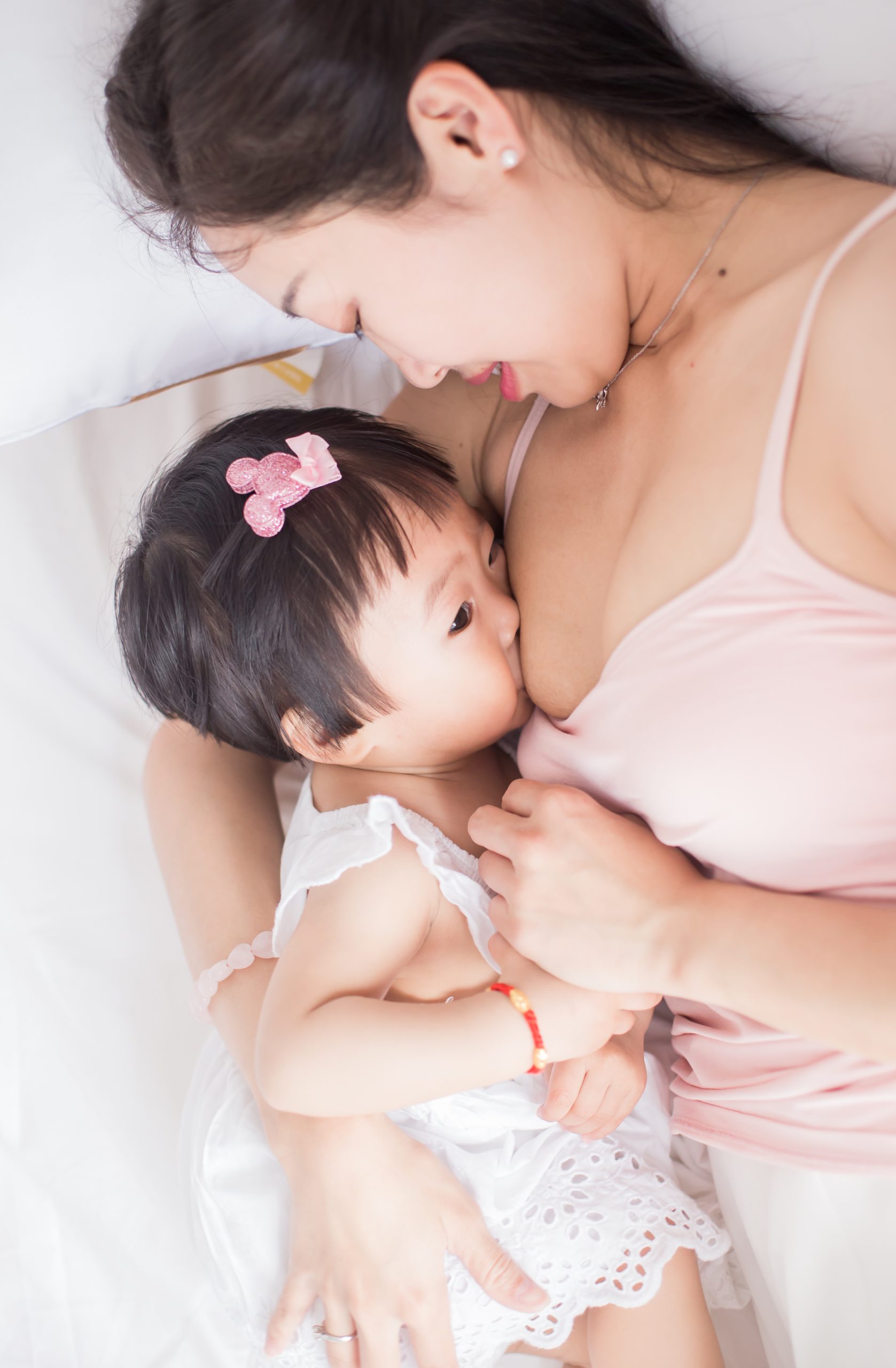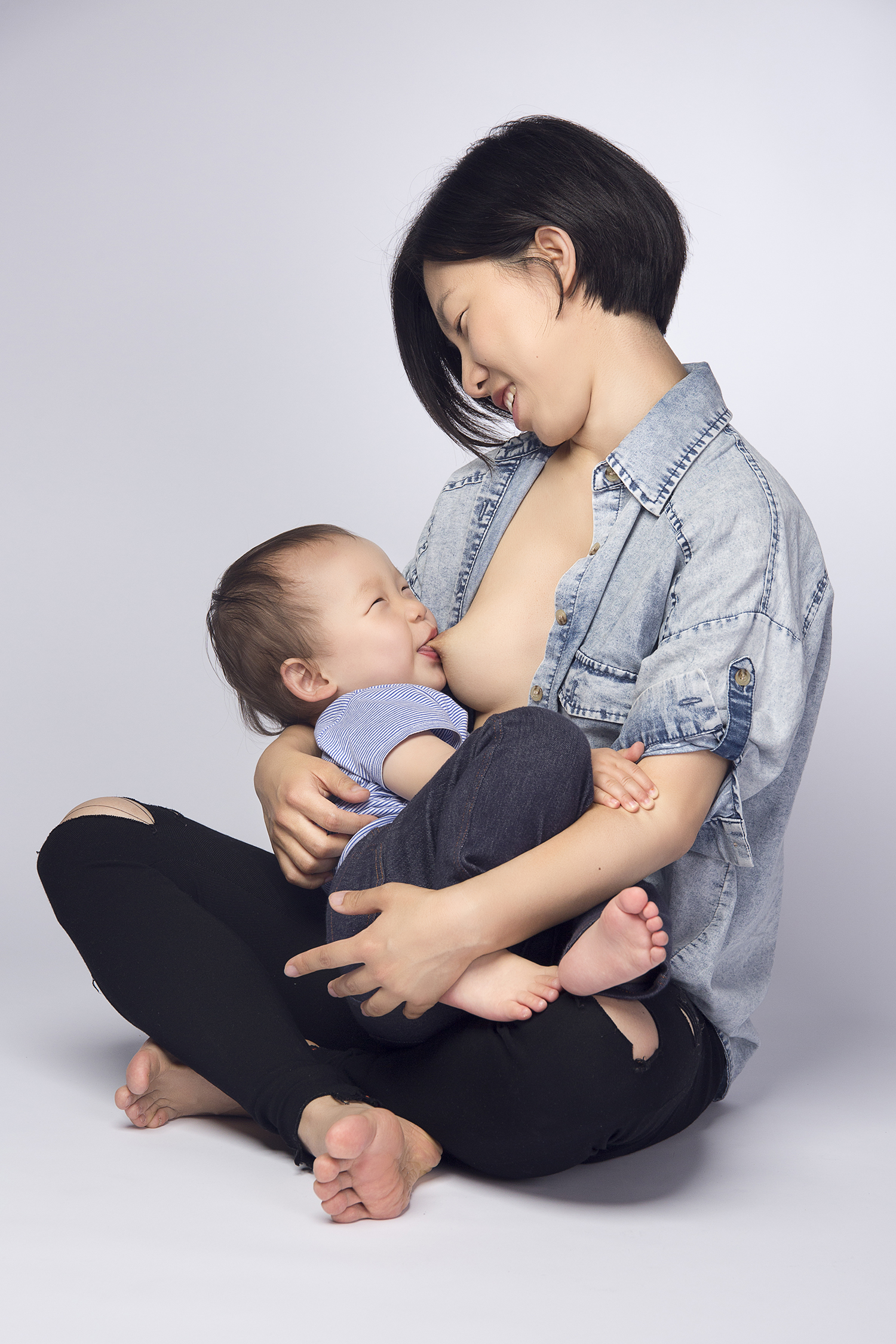Nancy Williams
Santa Maria CA USA
From: NEW BEGINNINGS, Vol. 21 No. 3, May-June 2004, pp. 84-88
Season Yang译,Shiuh-jane、Daisy审稿
The birth of a baby is generally regarded as a time of great happiness. Mothers and fathers see the child they hold in their arms as the long-awaited fulfillment of their dreams.
婴儿的诞生通常被视为一段非常幸福的时光。看着臂弯里的孩子,父母们感觉到他们长久以来期待的梦想已经实现。
However, new parenthood may bring emotions that are the opposite of bliss and contentment. Some experts estimate that 50 to 80 percent of women are affected by some degree of depression following childbirth (Komaroff 1999). They may feel sad, tired, and anxious. Some of this may be due to hormonal changes following childbirth. The realities of caring for a helpless infant, which include lack of sleep and a loss of control over one‘‘s own life, also play a role. For most women, these “baby blues” last only a short time, and they emerge from their postpartum haze fully able to cope with the demands of mothering.
但是,初为人父母者所体验到的情绪可能与狂喜和满足相反。一些专家估计约百分之五十到八十的女人产后会被不同程度的沮丧情绪影响。(Komaroff 1999)她们可能会感到悲伤、疲劳,或者焦虑。有些情绪可能是由于产后荷尔蒙的改变引起的。照顾一个不能自理的婴儿,妈妈会缺少睡眠,失去对自我生活的掌控感,这些也会引起抑郁情绪。对大多数女人来说,这些“产后沮丧”只会持续一段短时间,一般出现于产后的慌乱期,而且完全可以融入于母职的工作中。
Some women, however, find themselves enveloped in an inexplicable and unrelenting sadness. They may be experiencing postpartum depression. Symptoms include feelings of helplessness, mood swings, anxiety, inability to sleep, and a lack of interest in life (see Box #1). These feelings do not go away. They persist for weeks, and the mother seems unable to help herself get better.
但是,有些女人发现她们笼罩在一种无法言说的无尽的悲伤中。她们可能患上了产后抑郁症。产后抑郁症的症状包括无助感、情绪不稳定、焦虑、失眠、对生活没有兴趣(见下文)。这些感觉持续不走,停留数星期,妈妈似乎无法自我改善。
Postpartum depression is but one of several mood disorders that may manifest itself following the birth of a baby. “Mood disorder” is a term psychiatrists and psychologists use to describe problems with feelings of depression, anxiety, and fear. It can also describe inappropriate “high” feelings defined as “mania.” As science has learned more about the brain and how it functions, mental health professionals and the general public have come to recognize that depression and other psychological disorders are not, as was once thought, the result of character weakness or a lack of will power. Depression and other mood disorders are caused by physical factors in the brain interacting with a person‘‘s life experiences.
产后抑郁症是一种但不是唯一一种在生产后显现的情绪障碍。情绪障碍是一个精神病学家和心理学家用来描述沮丧、焦虑和恐惧等感觉的术语。它也可以用来描述不适当的“情绪高涨”的感觉——称之为“躁狂”。由于科学研究已经更多地了解了大脑及其运作,心理健康专家和广大民众已经认识到抑郁和其它心理障碍,不是像以前人们所认为的那样是有性格缺陷或缺乏意志力所引起的。抑郁和其它情绪障碍是大脑中生理因素与人的生活经验交互影响造成的。
Depression is a fairly common illness. One in five adults will experience a major depression in his or her lifetime. The physical and emotional stresses of pregnancy, childbirth, and new motherhood can trigger depression and other mental health problems in vulnerable individuals. Postpartum depression occurs in about 10 percent of new mothers in the first year after giving birth (ACOG 1999). Other mood disorders, such as bipolar disorder (in which periods of deep depression alternate with manic periods of hyperactivity and elation), often make their first appearance during young adulthood. Thus, depression and other mood disorders affect a significant number of women during the time they are caring for and breastfeeding their babies.
抑郁是一种很常见的疾病。五分之一的成年人在他/她的一生中都会经历一次重大的抑郁。对易感的人来说,怀孕、生产和成为新手妈妈带来的生理和情感上的压力都可能引起抑郁和其它心理健康问题。在生产后的第一年,10%的新手妈妈会出现产后抑郁(ACOG 1999)。其它情绪障碍,如躁郁症(在此期间深度抑郁和极度活跃、快乐两种情绪交替出现),通常在成年早期首次出现。因此,沮丧和其它情绪障碍会影响许多妇女,在他们照顾和哺乳他们的孩子时。
Effects of mood disorders range from mild disruptions in life to severe disability and incapacitation. While the mother may often be acutely aware of something being wrong, family members are sometimes the first to notice. Some women feel persistently sad, anxious, and unhappy with motherhood. At the other end of the spectrum, women with severe symptoms may have hallucinations or delusions and a distorted view of reality.
情绪障碍的影响范围从对生活轻微的破坏到个体严重丧失能力。当妈妈可能经常敏感地察觉到什么事情不对时,家庭成员有时候是最先发现的。有些女人持续地悲伤、焦虑,对母亲的身份感到不开心。之后,症状严重的女人会有幻觉或妄想以及对现实的扭曲感。
Research has shown that a mother who is struggling with depression will have trouble being a good mother to her baby. The baby‘‘s development depends on having a responsive caregiver. Babies‘‘ brains develop their many networks of nerves and information in response to the myriad daily interactions between the mother and baby. Babies learn social behavior, language, and a great deal more from eye-to-eye contact with mother, from her animated facial expressions, vocal responses, and the like. A mother who has no energy to get out of bed or to engage her baby in “conversation” is unable to meet these needs. At the same time, the depressed mother is robbed herself of the day-to-day happiness of mothering her baby and other children.
研究显示,与抑郁情绪做斗争的妈妈无法胜任好妈妈的角色。婴儿的发育依赖于一个能与之积极互动的照料者。通过母亲与婴儿之间的大量日常互动,婴儿的大脑神经和信息网络得以发展。婴儿通过与妈妈的眼神交会、妈妈生动的面部表情、口头的回应等等来学习社会行为、语言表达等一切技能。一个没有精力起床或没有精力与她的宝宝进行“交谈”的妈妈是不能满足这些需求的。同时,一个抑郁的妈妈已经失去了自己照顾婴儿与其他孩子所带来的日复一日的生活中的幸福感。
This is why it is important to treat postpartum depression and other mood disorders promptly. The welfare of both the mother and the baby are at stake.
这就是为什么及时治疗产后抑郁和其它情绪障碍很重要的原因。妈妈和宝宝的福祉都处于危险之中。
Treatment of postpartum depression and other mood disorders will vary according to the needs of the individual. In many cases “talk” therapy is very effective. A psychotherapist can help a mother replace false messages she gives herself (“I am the worst mother in the world”) with a more realistic appraisal of herself and her situation. This type of therapy is called cognitive behavioral therapy; its goal is to help people recognize their false beliefs about the world and themselves and learn to think in new ways. Professional counseling can also help an individual build better support systems for herself and find ways to get her own needs met.
根据个体的需要,治疗产后抑郁和其它情绪障碍的方法也多种多样。在许多情况下“谈话”治疗很有效。一个心理治疗师能帮助一个母亲用对她自己及她的处境更实际的评价替换掉她给予自己的错误信息(如“我是世界上最差劲的妈妈”)。这种疗法称为认知行为疗法。它的目标是帮助人们了解关于自己对世界和自身的错误信念,进而学习以新的方式思考。专业咨询也可以帮助个体为自我建立起更好的支持系统,并且找到方法来满足自我的需求。
Sometimes depression is also treated with medication, which can provide excellent relief of symptoms within a relatively short period of time. It can be unwise, however, to only use medications to treat postpartum depression. Medications may help an individual feel better within a few weeks, but therapy can help that person make the life changes that can result in long-term wellness.
有时候抑郁症也会用药物治疗,药物能在相对短的时间里很好地减轻症状。但是,只使用药物治疗产后忧郁是不明智的。药物或许能帮助一个人在数周内感觉好些,但是治疗能帮助人改变生活从而获得长期的健康。
Caring for mothers with postpartum mood disorders presents unique challenges to health care providers, including mental health providers. Health care providers who treat mental illness include psychiatrists and other physicians who may prescribe antidepressant medication, and psychologists, counselors, or therapists who provide “talk” therapy. When they treat mothers of young infants, they have two, rather than the usual one patient to concern themselves with. Mother and baby are interdependent, especially if they are breastfeeding. They are a “dyad,” meaning two units that are regarded as one. Treatment of the mother‘‘s illness must support both the mother and baby.
照顾产后情绪障碍的妈妈是对医护人员的独特的挑战,其中包含精神健康照顾者。治疗精神疾病的医护人员,有精神病学家和内科医生,他们可能会开抗抑郁药物;而心理学家、咨询师和治疗师,他们可能会提供“谈话”治疗。当他们治疗有新生儿的妈妈们时,他们需要考虑到有两个病人而不是通常说的一个病人。妈妈和孩子是相互依赖的,尤其是在哺乳期的时候。他们是个“二联体”,也就是说二者是一体的。对妈妈的治疗必须同时照顾到妈妈和孩子。
Many health care providers do not have training or experience in devising a treatment plan that includes the needs of both members of a breastfeeding dyad. Consequently, it is very common for mothers to be told at the outset that they must wean in order to pursue treatment of their depressive illness. Physicians may tell the mother she must stop breastfeeding because of concerns about the baby‘‘s exposure to medication through the mother‘‘s milk. Therapists may also advise weaning, believing that if other family members could give the baby a bottle, the mother would be able to rest and relax. Many health care providers share the bottle-feeding mentality that is still the norm in Western cultures. A mother who insists on her “lifestyle” choice of breastfeeding in the face of challenges will often be viewed as making a foolish and possibly detrimental decision. Family members who are often frightened and worried by the mother‘‘s illness, may not be able to assist the mother in challenging treatment advice that includes sudden weaning.
很多医护人员没有制定哺乳双方的治疗计划的培训经历和经验。因此,在治疗一开始妈妈们就被告知必须断奶,以便治疗她们的抑郁症,这种情况是非常普遍的。内科医生可能会告诉妈妈她必须停止母乳喂养,因为担心孩子会通过母亲的乳汁而受到药物的影响。治疗师也可能会建议断奶,因为他们相信如果家庭成员能用奶瓶喂养孩子,妈妈就能休息和放松。很多医护人员持有奶瓶喂养的心态,这是西方文化中的普遍观点。一个坚持母乳喂养作为她的“生活方式”的妈妈面临很多挑战,她常常会被认为是做了一个愚蠢的、有害的决定。那些为妈妈的病而恐慌、忧虑的家庭成员可能也无法帮助妈妈反对治疗建议,其中可能包括突然断奶。
One mother, after recovering from a manic episode during which her doctor insisted that she wean immediately because of the medication she was taking, said later:
一个从躁狂发作中恢复过来的妈妈(她的医生坚持要她立刻断奶,因为她正在吃的药会影响到孩子)后来说:
People don‘‘t realize how desperate you and your husband feel to get help and be well. We didn‘‘t know who to listen to, as often three or four health care providers gave conflicting advice. The psychiatrist didn‘‘t see the baby as his problem and the pediatrician felt helpless to advise me. I feel a lot of sadness about weaning my baby, especially now as we are facing surgery to place tubes in the baby‘‘s ears because of frequent ear infections.
人们不能理解你和你丈夫希望获得帮助、恢复健康的愿望是如何迫切。经常三或者四个医护人员给出相互冲突的意见,我们不知道听谁的。精神病医生不会把孩子视为需要考虑的对象,儿科医生对我们又无能为力。给我的孩子断奶让我感到很伤心,尤其是现在,由于经常耳朵感染,我们正面临给孩子植入中耳通气管的手术。
A close look at weaning, however, reveals potential risks for both baby and mother that may outweigh any of the expected benefits. Some of these risks are especially pertinent in situations where a mother has a depressive illness or other mood disorder.
但是,仔细研究断奶会发现,断奶对孩子和妈妈的潜在风险可能要高于所期待获得的任何好处。在一个妈妈有抑郁症或其它情绪障碍的情况下,有些风险与断奶密切相关。
Maternal Concerns
Painful breasts. Most women experience engorgement, including the risk of breast infection and abscess, in the face of sudden weaning. A mother who stops breastfeeding will need to take steps to relieve her engorgement. This many involve acquiring an adequate pump or learning to hand-express milk, as well as using ice-packs and watching for symptoms of breast inflammation and infection. Some drugs used to treat mental illness may have a galactogogue effect, i.e., they cause the breasts to produce more milk. This can intensify the pain of engorgement and slow the process of getting the breasts to stop producing milk.
母亲的风险
乳房疼痛。大多数女人在面临突然断奶时遭遇过乳房肿胀,包括乳房感染和脓肿的风险。一个将停止母乳喂养的妈妈需要采取几个步骤来减轻她的乳房肿胀。这些步骤当中包含获得一个适当的吸奶器或者学会手动挤奶,同时视乳房发炎和感染情况使用冰袋。有些用来治疗精神疾病的药物具有催奶效果,也就是说,他们会使乳房生产更多的奶。这会加剧涨奶的疼痛并减缓乳房停止产奶的进程。
Hormonal shifts. Sudden weaning brings sharp changes to maternal levels of estrogen, progesterone, and prolactin. The result may be mood swings and exacerbation of the mother‘‘s depression. A breastfeeding mother‘‘s mood is positively affected by the oxytocin released into her blood whenever she nurses the baby; sudden weaning deprives a depressed mother of this mood-boosting hormone.
荷尔蒙的改变。突然断奶给母性的雌激素、黄体酮和催乳素带来巨大的改变。这样的变化可能导致情绪波动,也可能使母亲的抑郁症加剧。每当母亲哺乳宝宝时,她的心情就会正向地受到释放于血液中的催产素所影响;突然断奶剥夺了一个沮丧的妈妈的这种情绪促进荷尔蒙。
Additional burden of baby care in the long-term. Family and friends rally to the aid of the mother in crisis, and they are ready and willing to bottle-feed the baby so that the mother can get some rest. But this support is often short-lived as the demands of life require the helpers‘‘ attention elsewhere. When the helpers are gone, the mother finds herself with the additional burden of cleaning and preparing bottles and other feeding paraphernalia, where previously, breastfeeding meant that she could luxuriate in the opportunity to sit down and simply cuddle her baby to her breast.
长期照看孩子的额外压力。家人和朋友团结起来帮助处于危机中的妈妈,他们准备并且乐于用奶瓶喂养孩子,这样妈妈就能稍微休息一下。但是这种帮助是短暂的,因为生活需要帮助者们把注意力放到其它地方。当没有帮助者的时候,这个妈妈发现她有了额外的压力:清洗、准备奶瓶和其它相关用具,而在以前母乳喂养的时候她只需要舒服地坐下来,轻松地把孩子抱到她胸前。
Expense. The costs of weaning include not only the additional cost of buying formula, but also the expense of more frequent illnesses in baby. Bottles and other feeding paraphernalia may need to be purchased. This financial burden will fall on a young couple who likely can ill-afford it.
额外的开支。断奶的代价不仅仅是购买婴儿配方奶的额外费用,还有孩子更频繁地生病的花费。奶瓶和其它喂养相关用具需要购买。这些经济负担会降临到年轻的夫妇身上,他们可能负担不起这些。
Return of fertility. The possibility of another pregnancy is an important concern for a family already struggling to cope. Weaning the baby will cause the mother‘‘s fertility to return, so she must consider contraception. This can be an added cost. In families who choose not to use contraception, lactation amenorrhea provides an important child-spacing mechanism.
生育能力恢复。对一个已经疲于应对的家庭来说又一次怀孕的可能性是一个重要的要关注的问题。给孩子断奶会导致妈妈的生育能力恢复,因此她必须考虑避孕。这也会增加花费。在选择不避孕的家庭里,哺乳期闭经提供了一种重要的控制生育间隔的途径。
Disruption in bonding. It‘‘s not unusual for mothers who are depressed to find themselves unable to make the effort to play with their children, cuddle their babies, and so forth. When breastfeeding, the baby is assured of some loving contact with mother several times a day. The “mothering hormones” associated with breastfeeding foster the mother‘‘s attachment to the baby. If bottle-propping becomes an option for feeding the baby, the mother may not spend as much quality time with her infant.
亲子连接的破坏。抑郁的妈妈们发现她们不能尽力与她们的孩子玩耍、拥抱她们的孩子等等。哺乳的时候,能确保孩子与她们的妈妈每天有数次充满爱意的接触。与母乳喂养相关的“母性荷尔蒙”促进妈妈与她的孩子的连接。如果奶瓶喂养成为养育孩子的一个选项,妈妈可能就不会花那么多的一样高质量时间给她的婴儿。
Feelings of helplessness. Generally speaking, mothers with mood disorders are feeling out of control, powerless, and hopeless. Breastfeeding may be one thing that helps a mother to feel good about herself and her mothering. Telling her to stop breastfeeding delivers one more message of inadequacy. If others take over the baby‘‘s care, her inadequacy and powerlessness are confirmed. It‘‘s not unusual for mothers to experience tremendous grief, as well as hostility toward care providers even decades after an enforced weaning.
无助感。一般而言,有情绪障碍的妈妈们感觉失控、无力、没有希望。母乳喂养可能是能帮助这些妈妈们对她自己以及履行母职感觉好一些的一件事。让她停止母乳喂养给了她又一个能力不足的信息。如果其他人接手照顾宝宝,她的不足和无力便被确定了。甚至在被强行断奶数十年后,妈妈们还会有巨大的悲痛和对医护人员的敌意。
Infant Concerns
The younger the baby, the greater the risk for allergies and other nutritional problems. Substituting formula for human milk has significant health risks for infants, including increased risk of allergies, Type I diabetes, obesity, Crohn‘‘s disease, and much more.
婴儿的风险
婴儿越小,过敏和其它营养问题的风险越大。对婴儿来说,替代母乳的配方奶有很大的健康风险,包括过敏风险增大,得I型糖尿病、肥胖、克罗恩氏病等的风险会增大。
More frequent and serious illness. Breastfeeding protects babies against infectious disease. Babies who are formula-fed have more frequent colds, ear infections, diarrhea, and gastrointestinal upsets. Not only is weaning risky for the baby‘‘s health, it also creates parenting challenges. Sick babies need and demand more attention around the clock.
更频繁、更严重地生病。母乳喂养保护婴儿避免感染流行病。配方奶喂养的婴儿更频繁地感冒,耳部感染,腹泻以及胃肠不适。断奶不仅会给婴儿的健康带来风险,也会给婴儿的养育带来挑战。生病的婴儿一整天都需要并且要求更多的关心。
Attachment trauma. A baby who is denied access to the breast for food and comfort may be grief-stricken. Separating mother and baby for prolonged periods of time may have lasting effects. The research is clear on the desperate need of mother and baby to be together for babies to experience normal growth and development. When they are unable to interact, there is evidence that lifelong depression may begin forming in the infant. One study of rat pups who were weaned and separated from their mothers for one 24-hour period during the neonatal period demonstrated both elevations in stress hormones and disruption of the hypothalamic-pituitary-adrenal system, which helps to regulate mood (Schmidt 2002). The distress a baby experiences with sudden weaning is real and should not be ignored or minimized by health care providers or substitute caregivers.
依恋创伤。一个不许靠近乳房来取食和获取安慰的婴儿可能会极度悲伤。妈妈和婴儿的长时间的分离可能会带来持续的影响。研究清晰地表明,妈妈和婴儿极需彼此在一起,以便让婴儿能正常生长和发育。证据说明当他们不能互动的时候,终身的沮丧可能在婴儿时期就开始形成了。一个对新生老鼠的研究表明,在新生儿时期断奶并且与鼠妈妈隔离24小时后,帮助调节情绪的应激激素升高,下丘脑-垂体-肾上腺的系统被破坏。(Schmidt 2002)婴儿经历的由于突然断奶带来的悲痛是真实的,医护人员或是替代看护人不应忽略或看轻这一点。
The breastfeeding dyad that is struggling because of the mother‘‘s mood disorder may be particularly vulnerable to the effects of sudden weaning. If hormonal shifts and negative messages cause the mother‘‘s mood to spiral downward, she becomes less able to effectively mother her baby. If baby becomes more sickly because of stomach upsets or allergies, he presents a bigger challenge to her mothering skills. A baby who is more difficult to comfort can make a mother feel even more inadequate and helpless. And, since many experts believe that there is a genetic component to mental illness, it stands to reason that the disrupted attachment inherent in sudden weaning may predispose the baby to mood disorders in the future.
由于妈妈的情绪障碍而挣扎的母乳喂养二联体可能尤其容易受到突然断奶的伤害。如果荷尔蒙的改变和负面信息导致妈妈的情绪螺旋式下降,她会变得不那么能有效地照顾她的孩子。如果婴儿由于消化不良或是过敏导致更虚弱,就对妈妈的养育能力提出了更大的挑战。一个更难满足的婴儿会使妈妈觉得自己更不足和无助。同时,由于很多专家相信精神疾病有遗传因素的影响,突然断奶带来的依恋的破坏将使孩子未来产生情绪障碍的可能性增加,得出这样的推论看起来就合乎情理。
What Is the Answer?
In many situations, it is possible for a mother to continue to breastfeed while being treated for postpartum depression or other types of mood disorder. She will need the support of family and friends, as well as health care providers, as she continues to care for her baby and to attend to her own recovery. It is important for everyone assisting her to recognize and respect her needs and those of the baby.
应该如何处理产后抑郁?
很多情况下,当妈妈由于产后抑郁或是其它类型的情绪障碍接受治疗时继续母乳喂养是可能的。为了继续照顾她的孩子和自我恢复,她需要医护人员和家人、朋友的支持。让每个支持她的人认识到并且尊重她和孩子的需求,这一点非常重要。
The support and practical assistance of loved ones is crucial to a positive outcome. Many mothers who are depressed experience feelings of inadequacy and marginalization. Additionally, those caring for her may manipulate or coerce her into agreeing to a treatment plan that does not acknowledge what is important to her—breastfeeding and mothering her baby. This sometimes occurs as a result of the fear that loved ones feel when they see the mother having such a hard time. The fact is that, despite her illness, she is often quite capable of making decisions.
亲朋的支持和实际的帮助对于产生积极的结果至关重要。很多抑郁的妈妈都有无力感和边缘化的感受。另外,那些照顾她的人可能会控制或者强迫她同意治疗计划,那些治疗计划没有考虑母乳喂养和亲自照顾她的婴儿对她来说是重要的。这也许是那些关心妈妈的人自身的恐惧感带来的结果,因为看到妈妈如此艰难会令人担心。事实是,虽然她有病,但是通常她完全有能力做决定。
That being said, mothers would do well to discuss the importance of breastfeeding with family members before a crisis (of any kind!) occurs. Mothers should share their feelings about their relationship with the baby, breastfeeding goals and desires, and hopes for the future with their partners and other loved ones. When family and friends understand the importance of breastfeeding through the mother‘‘s eyes, perhaps they will not suggest weaning as a first recourse. Having this knowledge will also prepare these individuals to advocate for the breastfeeding mother and baby in the event of a crisis. Educating her family about breastfeeding could include sharing her LLL Leader‘‘s phone number and the names of some LLL friends.
也就是说,妈妈们完全能在任何形式的危机来临前与家庭成员讨论母乳喂养的重要性。妈妈们可以分享她们对于亲子关系的感受,实行母乳喂养的目标与愿望,以及未来对她的伴侣与关心的人的希望。当家人和朋友理解了妈妈眼中母乳喂养的重要性,或许他们就不会把断奶的建议当作第一选择。有了这点认识也会使这些人准备好在发生危机时支持母乳妈妈和孩子。分享国际母乳会哺乳辅导的电话和国际母乳会朋友的名字可以帮助她的家人了解母乳喂养。
Finding a mental health care provider who understands the concept of the breastfeeding dyad is also crucial to the mother‘‘s treatment. The mother will oftentimes be seeing both a psychiatrist and a psychotherapist, as they have different roles in the treatment. She will need support from both if at all possible.
找到一个理解母乳喂养共生体观点的精神健康照顾者对于妈妈的治疗也很重要。妈妈会经常看精神病医生和心理治疗师,因为他们在治疗中扮演着不同角色。如果可能的话她需要两者的帮助。
The psychiatrist should be willing to explore treatment options that allow the mother to continue breastfeeding. This may involve seeking out information about the effects of various medications on breastfeeding and the infant. It is important to know that many of the drugs being used to treat these problems are compatible with breastfeeding. In other cases, a safer substitute drug that is also effective may be used to treat the mother‘‘s disorder. Information on specific drugs may be obtained from various sources, including La Leche League‘‘s Professional Liaison Department and written materials such as Dr. Thomas Hale‘‘s Medications and Mothers‘‘ Milk. This information can then be shared with health care providers as appropriate.
精神病医生应该要愿意探索能让妈妈继续母乳喂养的治疗方案。包括寻找各种药物对母乳喂养和婴儿的影响的信息。了解很多用来治疗这些问题的药物与母乳喂养是不矛盾的是很重要的。另一方面,一种安全、有效的替代药物可能会用来治疗这个妈妈的情绪障碍。详细的药物信息可以通过多种渠道获得,包括国际母乳会专业联络部门和书面材料如Dr. Thomas Hale‘‘s的书籍《药物与母乳喂养》。这些信息在适当时可以与医护人员分享。
When physicians make decisions about drugs, there are factors to consider besides the drug‘‘s presence in the mother‘‘s milk. Whether or not a drug is harmful will depend on the amount of the medication that gets into the milk as well as the age of the baby and how much the baby is nursing. The risks of the baby receiving a small amount of the mother‘‘s medication in her milk must be weighed against the risks of formula-feeding. While using some drugs, it may be advisable to monitor the baby‘‘s blood levels and to watch for an adverse reaction. The mother‘‘s physician can consult the baby‘‘s physician on issues related to monitoring possible drug reactions in the baby.
当医生决定开药时,除了药物会在妈妈乳汁里外还有几个因素要考虑。药物是否有害取决于进入到乳汁中的药物的含量和婴儿的年龄以及婴儿摄入的奶量。婴儿从妈妈乳汁中汲取少量药物的风险要与婴儿配方奶带来的风险做比较。当使用某些药物时,监测孩子的血中药物浓度、观察不良反应是明智的做法。在监测婴儿可能发生的药物反应上,妈妈的医生可以向婴儿的医生咨询。
A good therapist should be willing to listen and learn about the family‘‘s specific needs, including the value the mother places on her breastfeeding relationship. This caregiver would be willing to talk with other health care providers (with the permission of the mother). Rather than advise the mother to wean, the therapist would listen to the mother‘‘s feelings about her breastfeeding relationship with her baby, and whenever possible, not only support it but advocate for it with other health care providers.
一个好的治疗师应该是乐于倾听和了解家庭特殊需要的,包括妈妈在母乳喂养关系上所赋予的价值。这位照料者可能乐于与其它医护人员交谈(经妈妈的同意)。与其劝妈妈断奶,治疗师不如倾听妈妈关于她对母乳喂养关系的感受,只要可能,不仅仅支持,而且向其它医护人员倡导。
One of the immediate issues in situations where a mother has a depressive illness is whether she is able to care for her baby and for other children in the family. If the mother is deemed able to care for the baby on her own, then certainly breastfeeding would make her task easier! If she needs assistance, her helpers can take over household responsibilities, or care for older children, leaving the mother to concentrate what energy she has on the baby. A woman with a severe mood disorder, whose symptoms or distorted perception of reality prevent her from safely caring for her baby or even herself, may need friends and family to take turns being with her and the baby. This would allow for continuing attachment between the mother and baby while at the same time ensuring safety for both. This mother could continue to breastfeed even if her helpers must physically assist her with getting the baby to the breast.
在一个妈妈有抑郁症的时候立即面临的问题之一就是她是否还能照顾她的婴儿和家里的其它孩子。如果这个妈妈被认为自己能照顾她的婴儿,那么母乳喂养肯定能让她轻松一些。如果她需要帮助,她的帮助者们能帮她做家务,或者帮她照顾大一点的孩子,以便她能集中精力照顾她的新生儿。有严重情绪障碍的女人(她们的症状或者对现实的扭曲妨碍到了婴儿甚至是她自己的安全)可能需要朋友和家人轮流在身边陪伴她和她的婴儿。这允许妈妈和宝宝之间的连接持续,同时也确保他们的安全。这位妈妈可以继续母乳喂养,即使她的帮助者必须帮助她把孩子抱到她的胸前。
In the event of an unavoidable hospitalization, the family could see about bringing the baby to the mother regularly, as well as arranging for a breast pump and assistance with using it. It‘‘s likely that, in many institutions, the idea of supporting continued breastfeeding would be new and therefore possibly viewed with suspicion or even scorn. Again, it becomes crucial for loved ones to advocate for the mother if she has trouble standing up for herself.
如果必须住院,家里人要考虑定期把婴儿带给妈妈,同时准备吸奶器以及帮助她使用吸奶器。多数情况下,很可能是这样的:支持继续母乳喂养的想法是新鲜的,因此很可能会被怀疑甚至是被讥讽。如果妈妈无法面对这些麻烦,关爱她的人的支持再次变得非常重要。
Fortunately, effective treatment is available for postpartum depression and other mood disorders. These illnesses do not carry the stigma that they have in the past, and treatment need not compromise any further a mother‘‘s attachment to her breastfed baby. When the mother, her partner, friends, and other family members work together with health care providers, solutions can be found that will enable the mother to continue to breastfeed as she recovers from her mood disorder. Both she and her baby will benefit.
幸运的是,产后抑郁及其他情绪障碍已经有了有效的疗法。这些疾病不会带着过去的污名,而治疗也不需要中断任何妈妈和宝宝的连接。当妈妈和她的配偶、朋友以及其它家庭成员和医护人员一起努力,可以找到使妈妈能够在复原过程中继续母乳喂养又能治疗她的情绪障碍的办法,妈妈和她的婴儿都将获益。
References(参考文献)
American College of Obstetricians and Gynecologists (ACOG). Answers to Common Questions about Postpartum Depression. Washington DC: ACOG, 2002.
Hale, T.R. Medications and Mothers‘‘ Milk, Eleventh Edition. Amarillo, Texas: Pharmasoft Publishing, 2004.
Kendall-Tackett, K.A. The Hidden Feelings of Motherhood. Oakland, California: New Harbinger Publications, 2001.
Komaroff, A.L., ed. Harvard Medical School Family Health Guide. New York: Simon and Schuster, 1999.
Mohrbacher, N. and Stock, J. THE BREASTFEEDING ANSWER BOOK. Schaumburg, Illinois: La Leche League International, 2003.
Schmidt, M. et al. Maternal regulation of the hypothalamic-pituitary-adrenal axis in the 20 day-old rat: consequences of laboratory weaning. Journal of Neuroendocrinology 2002; 14(6):450-57.
Taj, R. and Sikander, K.S. Effects of maternal depression on breast-feeding. Journal of Pak Med Assoc 2003; 53(1):8-11.
| A mother with postpartum depression may suffer from any or all of the following symptoms, although the most severe symptoms occur only rarely.
一个产后抑郁的妈妈会有以下一些症状,尽管最严重的症状很少出现。
feelings of sadness and helplessness悲伤和无助感
anxiety焦虑
headaches头痛
mood swings情绪波动
insomnia失眠
general lack of interest in life对生活缺乏兴趣
loss of appetite食欲不振
fear of hurting the baby or worry over inability to care for the baby怕伤害宝宝或担心没有能力照顾宝宝
ankle swelling or weight increase踝关节肿大或体重增加
vomiting呕吐
panic恐慌
distorted perception of reality对现实的扭曲感受
hallucinations or delusions幻觉错觉
suicidal or homicidal thoughts自杀或杀人想法
If these symptoms intensify rather than fade, and last longer than about two weeks, the mother may be suffering from postpartum depression. It is important that a mother attempt to overcome her postpartum depression, because it not only affects the mother and her relationship with her baby. Untreated postpartum depression can also affect a baby‘‘s physical and social development.
Source: Mohrbacher, N. & Stock, J. THE BREASTFEEDING ANSWER BOOK. Schaumburg, Illinois: La Leche League International, 2003; 570-75.
如果这些症状加强而不是逐渐消失,并且持续两周以上,这个妈妈可能患上了产后抑郁症。妈妈试图克服产后抑郁是很重要的,因为它不仅影响妈妈及她与宝宝的关系,没有治疗的产后抑郁也会影响婴儿的生理发育和社会能力的发展。
来源于:Mohrbacher, N. & Stock, J. THE BREASTFEEDING ANSWER BOOK. Schaumburg, Illinois: La Leche League International, 2003; 570-75. |
| Tips for Family Members家庭成员小贴士:
Get help for the mother early on.
The mother‘‘s partner or other family members should attend psychiatric appointments with her to show support, ask questions, help the mother retain and understand information, and to provide relevant information about the mother‘‘s relationships and history.
Talk of suicide should be taken seriously. Call the mother‘‘s doctor or her psychiatrist or therapist.
Utilize broad-based support and resources to collect needed information, including La Leche League‘‘s Professional Liaison Department, lactation consultants, and sources of information on medications and breastfeeding.
Evaluate demands on the mother, eliminating unnecessary tasks so that she can focus on the baby.
Hire household help.
Become educated on the specific disorder.
·尽早开始帮助妈妈。
·妈妈的配偶和其它家庭成员应该跟她一起参与精神治疗以示支持,问问题,帮助妈妈记住、理解治疗信息,提供与妈妈的社会关系及生活历史的相关信息。
·谈论自杀要认真对待。打电话给这个妈妈的治疗师或是精神科医生。运用广泛的支持和资源来收集需要的信息,包括国际母乳会专业的联络部门,哺乳顾问,以及药物与哺乳的信息来源。
·评价妈妈的需要,减除不必要的工作以便她能关注于她的婴儿。
·雇佣家政服务。
·学习相关的情绪障碍知识。 |
| For more information about mood disorders, see the following sources:
想要了解更多关于情绪障碍的消息,参考以下来源:
The National Women‘‘s Health Information Center
1-800-994-WOMAN (Spanish and English, Mon-Fri, 9 am-6 pm EST)
1-888-220-5446(hearing impaired)
8550 Arlington Blvd., Suite 300
Fairfax VA 22031 USA
www.4woman.gov/faq/postpartum.htm
Depression after Delivery
91 E. Somerset St.
Raritan NJ 08869 USA
800-944-4773
www.depressionafterdelivery.com
Postpartum Support International
www.postpartum.net
Postpartum Stress Center
www.postpartumstress.com
Kathleen Kendall-Tackett, PhD
Psychologist, researcher, and author
www.granitescientific.com |
下图是美国卫生部公开建立的针对医护人员的药物与母乳喂养的英文数据库的链接。妈妈们可以将药物的英文名输入搜索,搜索结果包含孕产妇和婴幼儿的用药量,药物对母乳喂养的婴儿及对妈妈泌乳的影响,以及可替代的更安全的药物。建议妈妈们可以将相关信息提供给医生进行参考。










